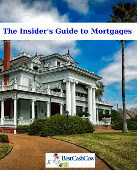Massachusetts 30-Year Fixed Conforming Mortgage
Average: 6.71% APR
| Lender | APR | Rate (%) | Monthly Payment? |
||||
|---|---|---|---|---|---|---|---|

Veterans United Home Loans NMLS ID: 1907 |
|
Learn More
|
|||||

Reliant Home Funding, Inc. NMLS ID: 292473 |
5.872% 30 Yr Fixed |
5.750%
Fees & Points
$4,277 Total
0.713 Pts: $2,282 $1,995 Fees |
Learn More
See Table View |
||||

Bison State Bank NMLS ID: 757416 |
5.961% 30 Yr Fixed |
5.875%
Fees & Points
$2,970 Total
0.928 Pts: $2,970 $0 Fees |
Learn More
See Table View |
||||

Allied Mortgage Group, Inc. NMLS ID: 1067 |
6.052% 30 Yr Fixed |
5.990%
Fees & Points
$2,138 Total
0.668 Pts: $2,138 $0 Fees |
Learn More
See Table View |
||||

New American Funding, LLC. NMLS ID: 6606 |
6.218% 30 Yr Fixed |
6.125%
Fees & Points
$3,178 Total
0.993 Pts: $3,178 $0 Fees |
Learn More
See Table View |
||||

Mutual of Omaha Mortgage, Inc. NMLS ID: 1025894 |
6.353% 30 Yr Fixed |
6.250%
Fees & Points
$3,503 Total
0.876 Pts: $2,803 $700 Fees |
Learn More
See Table View |
||||

Neighbors Bank NMLS ID: 491986 |
|
Learn More
|
|||||

Rocket Mortgage NMLS ID: 3030 |
|
Learn More
|
|||||

Veterans United Home Loans NMLS ID: 1907 |
|
Learn More
|
|||||
|
Rate data provided by RateUpdate.com. Displayed by ICB, a division of Mortgage Research Center, NMLS #1907, Equal Housing Opportunity. Payments do not include taxes, insurance premiums or private mortgage insurance if applicable. Actual payments will be greater with taxes and insurance included. Click here for more information on rates and product details. |
|||||||
|
Institution For Savings In Newburyport And Its Vicinity Updated 09/20/2024 |
6.16% |
5.55%
0.00 points $1,635.00 fees |
$1,827.38 |
See Table View |
|||
|
Updated 12/14/2022 |
5.92% |
5.88%
0.00 points $0.00 fees |
$1,892.92 |
See Table View |
|||
|
The Lowell Five Cent Savings Bank Updated 12/12/2025 |
6.16% |
6.02%
0.00 points $0.00 fees |
$1,923.50 |
See Table View |
|||
|
U.s. Bank National Association Updated 05/07/2023 |
6.27% |
6.13%
0.63 points $0.00 fees |
$1,944.35 |
See Table View |
|||
|
Updated 10/13/2023 |
7.59% |
6.20%
0.00 points $0.00 fees |
$1,960.32 |
See Table View |
|||
|
Updated 12/12/2025 |
6.04% |
6.25%
1.88 points $3,210.00 fees |
$1,969.25 |
See Table View |
|||
|
Updated 12/27/2022 |
6.37% |
6.25%
0.00 points $0.00 fees |
$1,970.30 |
See Table View |
|||
|
Updated 06/21/2024 Restrictions |
6.43% |
6.29%
0.00 points $0.00 fees |
$1,978.63 |
See Table View |
|||
|
Wells Fargo Bank, National Association Updated 09/27/2024 |
5.82% |
6.33%
0.00 points $0.00 fees |
$1,986.77 |
See Table View |
|||
|
Updated 12/05/2025 |
6.22% |
6.35%
0.00 points $0.00 fees |
$1,990.11 |
See Table View |
|||
|
Updated 12/12/2025 |
6.17% |
6.36%
0.00 points $0.00 fees |
$1,993.25 |
See Table View |
|||
|
Updated 02/23/2024 Restrictions |
6.32% |
6.44%
0.00 points $0.00 fees |
$2,010.22 |
See Table View |
|||
|
Updated 10/10/2022 |
6.67% |
6.50%
0.00 points $4,266.00 fees |
$2,022.62 |
See Table View |
|||
|
Updated 06/15/2022 Restrictions |
6.52% |
6.50%
0.00 points $2,784.00 fees |
$2,022.62 |
See Table View |
|||
|
Updated 02/28/2023 Restrictions |
6.60% |
6.50%
0.00 points $0.00 fees |
$2,022.62 |
See Table View |
|||
|
Updated 11/08/2024 |
6.92% |
6.52%
0.00 points $2,600.00 fees |
$2,027.67 |
See Table View |
|||
|
Citibank, National Association Updated 10/18/2024 |
6.34% |
6.58%
0.88 points $2,739.00 fees |
$2,039.06 |
See Table View |
|||
|
Updated 09/12/2025 |
6.98% |
6.60%
0.00 points $0.00 fees |
$2,043.50 |
See Table View |
|||
|
Jpmorgan Chase Bank, National Association Updated 02/21/2024 |
6.72% |
6.63%
0.00 points $0.00 fees |
$2,049.00 |
See Table View |
|||
|
Bank Of America, National Association Updated 05/07/2023 |
6.86% |
6.63%
0.86 points $0.00 fees |
$2,049.00 |
See Table View |
|||
|
Data provided by BestCashCow |
|||||||
1 Rate data provided by RateUpdate.com. Displayed by ICB, a division of Mortgage Research Center, NMLS #1907, Equal Housing Opportunity. Payments do not include taxes, insurance premiums or private mortgage insurance if applicable. Actual payments will be greater with taxes and insurance included. Click here for more information on rates and product details.
Rates from this table are based on loan amount of $320,000 and a variety of factors including credit score and loan to value ratios. Rates may change at any time and are not guaranteed to be correct. For specific requirements please check with the lender.


